Choosing a MacBook Air or MacBook Pro
If your priority is mobility, you’ll want a MacBook Air (light) or a MacBook Pro (pretty light, more powerful).
The MacBook Air will work great for most people who just want a light notebook Mac to do things like web browsing, email, word processing, spreadsheets, etc. A MacBook Air is good for lightly editing photos taken by regular people, as well as editing video for short video clips.
If you’re going to be running a lot of apps at the same time or get into playing big games, you’ll want to error toward a MacBook Pro with Retina display. Similarly, if you want to edit larger photos and more complicated movies, the MacBook Pro is the better choice.
The 11-inch Air is great for ultra-light mobility at the lowest price, while the 13-inch MacBook Air will be better for most people because the display is larger. The 13-inch MacBook Pro with Retina display offers the best technical bang for your buck — 8GB of memory, a faster processor, and the super-crisp Retina display. The 15-inch MacBook Pro with Retina display is a workhorse laptop, while the older, traditional 13-inch MacBook Pro (without Retina) is heavier but includes a DVD drive as well as an easily upgradable hard drive and memory.
Still have questions?
Check out these three guides to help narrow your choices:
- MacBook Air Buying Guide 2014
- MacBook Pro Buying Guide: 13 vs 15-inch Retina Display
- MacBook Air vs MacBook Pro Buying Guide Review
Choosing an iMac
The iMac is an amazing all-in-one desktop wonder. It offers a huge and bright built-in monitor, and if you know you need a Mac to stay in one place in your household, the iMac is hard to beat. Choosing the right iMac, though, can be tricky. You have two basic screen sizes — 21.5 inches or 27 inches. The 21.5 inch iMac is perfect for most people, but if you’ll be doing a lot of work or editing movies or photos, you’ll appreciate the space on the 27-inch iMac. Plus, if you can afford it, the 27-inch iMac with Retina 5K display is absolutely glorious — a top-of-the-line desktop powerhouse. (You’ll love it, but it does cost around $2,499.)
Meanwhile, the entry level 21.5-inch iMac is a bit under powered — it has a slower dual-core processor, less storage space, and an older graphics processor, which really makes it best for business environments or schools. For long-term home use, I have to recommend the 21.5-inch 2.7 GHz model, the next version up the line, which boasts a faster quad-core processor, 1 terabyte of storage, and the better Intel Iris Pro Graphics. For just $200 more than the low-end iMac, this model is worth it.
If you know you want to play graphically rich games or do more serious photo and video editing, step up into the 2.9 GHz 21.5-inch iMac, or better yet, any of the 27-inch iMacs. The 27-inch iMacs boast better graphics processors with faster processors, and the screen? The original 27-inch iMac screen is fantastic — sharp and brilliant. Most everyone will love it.
That is, until they see the even sharper 27-inch iMac with the super-sharp Retina 5K display. At that point, the decision comes down to whether you can afford an extra $500-to-700. If you can, get the Retina 5K display. It’s actually a reasonable value — some 4K external displays only cost as much as the iMac with Retina 5K. Still, the difference is similar to choosing between a Camaro or a Corvette — both will deliver a heckuva lot of fun.
Still have questions?
Check out these guides to help narrow your choices:
- iMac Buying Guide 2014
- Apple’s New iMac with Retina 5K Display is Wicked Sharp
- Should You Get Apple’s New Entry-Level 21.5-inch iMac?
- Should I Buy an iMac and iPad or Just a MacBook Pro or Air?
Choosing a Mac mini
The Mac mini is Apple’s most affordable Mac. It’s basically a small desktop computer that you attach an external monitor to, a keyboard, and a mouse. In fact, when you buy a Mac mini, you only get the Mac, not a display, keyboard, or mouse. If you’re budget is super tight, your choice comes down to a Mac mini or an 11-inch MacBook Air. Both will get the job done — and you can always connect your MacBook Air to an external monitor to gain more workspace.
The Mac mini, though, excels for PC switchers who already have an external monitor they like, keyboard, and mouse. If you need to buy these accessories in addition to a Mac mini, the lowest extra you’ll likely spend will be another $150-to-280.
Get the entry-level 1.4 GHz Mac mini if you just need it for basic things like web surfing, email, word processing, or lightly editing some photos or short video clips. For basic computing, it will do fine. For something more capable, the mid-level 2.6 GHz Mac mini comes with 8GB of memory, a 1TB hard drive. It’s great for families with a variety of uses — but not great for graphically intense games. The “high-end” Mac mini costs nearly $1,000 but it comes with a faster 1TB Fusion drive and the better Intel Iris Graphics. At this price point, though, a typical family might be better off reaching a little farther and getting the 2.7GHz 21.5-inch iMac instead. Why? It comes with a great built-in monitor, of course, as well as an Apple Magic Mouse and Apple Keyboard. More importantly, this iMac has a quad-core processor rather than a dual-core processor. While this distinction isn’t such a big deal right now, in a couple of years, your iMac will be the more capable machine.
Still, it’s quite possible to buy a solid Mac mini to handle your computing requirements at home . . . and pick up an iPad Air 2 to handle your mobile computing requirements on the go — and end up spending less than you would getting a MacBook Air or iMac.
More Mac mini buying questions?
Check out this guide to help narrow your choices:
Choosing a Mac Pro
Apple’s high-end Mac is the Mac Pro, which is a svelte and sexy black cylinder of raw computing power. You need to pair it with an external monitor, and the lowest priced external monitor from Apple rings in at $1,000. Add in the starting price of $2,999, and suddenly you’re looking at lot of money just to get a pretty computer. Of course, the Mac Pro really is designed for professional use — graphic design, hard core computing, movie and professional photo editing, etc. It’s all very impressive, but mostly for serious work use. If you have the budget, it’s a work of art, but most people would be better off to simply get the 27-inch iMac with Retina 5K display. Not only will they get the best display on the market, they’ll get a very high performing Mac, too.
Choosing a Mac with an iPad and/or iPhone
Of course, the one of the hardest questions is whether to buy a portable Mac — the MacBook Air or MacBook Pro — or get a desktop Mac like the iMac or Mac mini . . . and then also get an iPad to handle your mobile computing needs. If you don’t need the full power of a Mac on the go, an iPad Air 2 with a third-party keyboard is a pretty compelling mobile option. The answer really comes down to how much real “work” you want to get done in remote locations. If you have an iPhone 6 or 6 Plus, you may also be able to ditch the popular notebook form factor and simplify your computing life by having an iOS device for mobility and a Mac at home.
This is really a deeply personal question. If you’re just not sure — and you are not choosing the Retina iMac — then go with a MacBook Air or Pro. If you take off for a week, you can still get serious work done. And at home? Get an external monitor for your main desk — which is what I do. I have a 24-inch monitor attached to my 15-inch MacBook Pro, and I do 95% of my computing work at my desk. But I do like the freedom of the notebook form factor.
All-in-all, you’re in luck when it comes to investing in any Mac. Why? Even if you make a mistake, your Mac will hold its value surprisingly well. You can sell it used and usually you can find a buyer happy to snap up a newer Mac at a slight “discount” via Craigslist or eBay. And if you do make a mistake? Count it as a learning experience — you’ll know exactly what your care about most. So, don’t stress, just go Mac and don’t look back.
Check out this guide to further explore the options:
AppleCare Protection Plan
If you’re super careful with your computing equipment, you can probably skip Apple’s extended AppleCare Protection Plan. Generally Apple’s quality is so good you don’t have to worry about paying for extra coverage. On the other hand, if you constantly travel (even worldwide) or are a little rougher on your equipment, AppleCare can payoff. If your battery prematurely loses its ability to hold a reasonable charge, that’s important if you have a MacBook Air. If your power cord frays or comes apart, boom, that’s an $80 replacement charge — unless you have AppleCare. For the most part, AppleCare is about peace of mind.
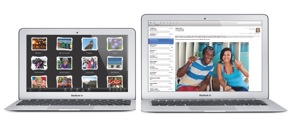
The MacBook Air is Apple’s lightest notebook computer. The 11-inch MacBook Air boasts ultimate portability while the 13-inch offers greater working space. Both have insanely high customer satisfaction rates. Great all-around performer. Check prices and options at Amazon.
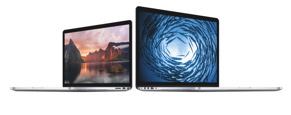
The MacBook Pro with Retina display comes in two screen sizes, 13-inch and 15-inch. This bad boy laptop delivers super-sharp images with its Retina display and ships with faster processors and twice the memory (8GB) than the MacBook Air (4GB). It costs more but it also has the power to handle heavy-duty work. Check prices and options at Amazon.
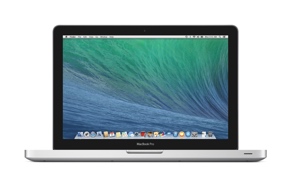
The 13-inch MacBook Pro (non-Retina) remains an more traditional option that Apple says is particularly popular with PC switchers. It’s a little heavier than the Air or Pro siblings, but it also includes a DVD drive. Better yet, the 500GB hard drive can be easily upgraded in the future to a super-fast SSD — and the memory can be upgraded to a whopping 16GB — giving this traditional option the ability to last for years and still feel fast. Check prices and options at Apple.
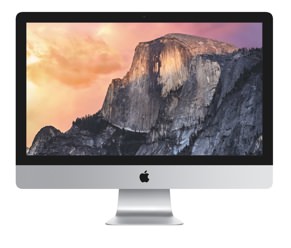
If you have a spot for this 27-inch iMac with Retina 5K display in your home — and $2,499 or so in spare change — this is the most luscious and awe-inspiring Mac you can get. The display is insanely great, even better than other 4K displays on the market, and it includes a wicked fast quad-core processor with a 1TB Fusion drive. Brilliant for editing photos, movies, and seeing text so sharp it seems alive. Check prices and options at Amazon.
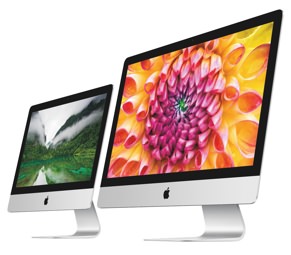
While the previous generation of iMacs do not have the super-dense Retina 5K display, the displays are still astoundingly good. Bright and crisp, most everyone will appreciate them. Beyond the 1.4GHz model, the iMac boasts an excellent blend of computing power with a gorgeous all-in-one design. Check prices and options at Amazon.
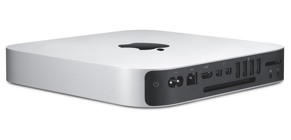
The Mac mini is Apple’s most affordable Mac, coming packaged into a small desktop form factor. PC switchers like it because they can use their old monitor, keyboard, and mouse — and still get into a Mac without buying Apple-branded monitors, keyboards, trackpads, or a Magic Mouse (but you can, to round the out “Apple” look and feel). Check prices and options at Amazon.
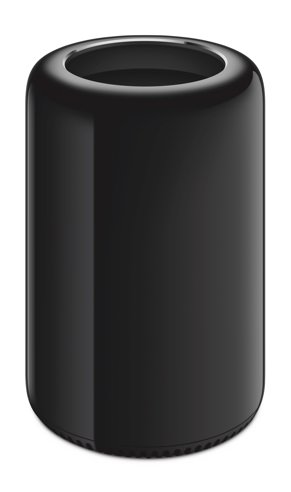
The Mac Pro is the ultimate combination of sexy power and versatility. Produced for high-end professional computing, every Mac fan would love one — but will probably never touch one because the entry-price starts at a mind-boggling $2,999 and just ramps up. Check prices and options at Amazon.
